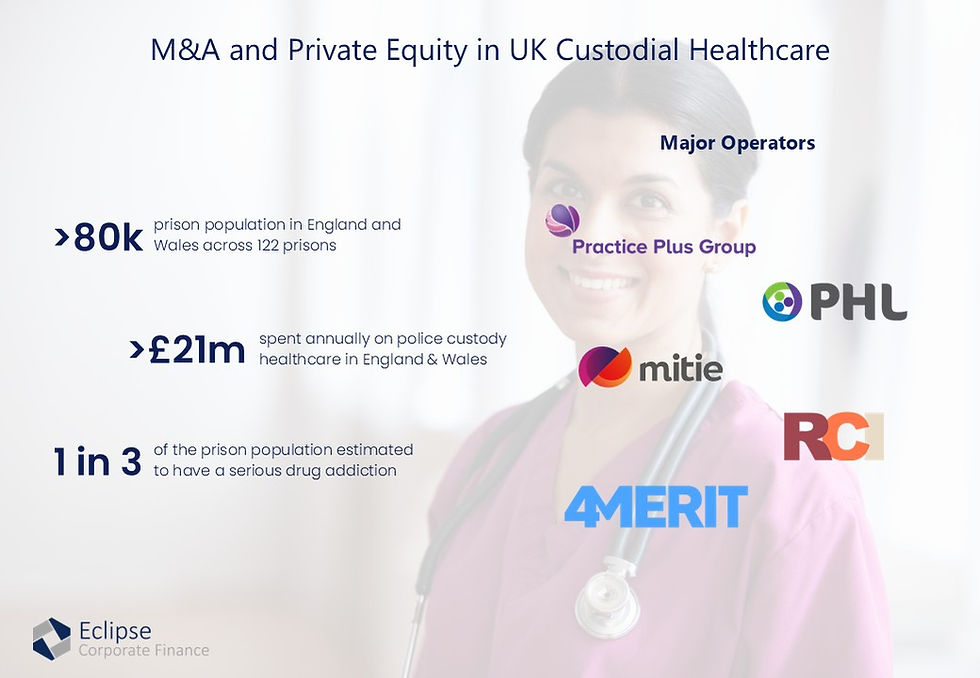Ophthalmology: M&A and private equity insights
- Eclipse Corporate Finance
- Jul 10, 2023
- 2 min read
Updated: Aug 23, 2025

As the NHS continues to search for methods to reduce the staggering waiting lists of 7.3 million, it is becoming increasingly clear that independent sector providers will play a key role going forward.
One area of the market which is already well advanced in its use of the independent sector is ophthalmology. Whilst clinical insourcing continues to play a role in addressing ophthalmology backlogs, outsourcing to community-based providers has been a major theme in recent years.
Certain areas of the ophthalmology market, such as cataract surgery, fit well with an outsourced model. The ability for independent providers to create highly efficient operations structured around an outpatient procedure with relatively low complexity, allows them to treat high volumes of patients and therefore effectively tackle waiting lists on behalf of the NHS. Furthermore, the efficiency of their operations means that they can often deliver these services at or below NHS tariff levels, whilst still generating healthy profit levels themselves.
With the trend towards outsourcing of certain NHS ophthalmic procedures, a small group of independent providers have specialised in this area and grown significantly as a result. This has attracted the attention of private equity, resulting in various transactions in recent years, including G Square’s investment into CHEC, MidEuropa’s acquisition of Optegra, and Nordic Capital’s acquisition of SpaMedica.
Not only does this provide a case study of how the independent sector can be used to effectively support the NHS, it also highlights some of the potential pitfalls in doing so.
Firstly, moving the majority of cataract surgery to the independent sector means it is more difficult for the NHS to train junior doctors, who would usually be doing these procedures. This creates an inability for the NHS to effectively train new ophthalmologists, limiting the growth in a workforce which is already severely stretched.
Secondly, it is clear that independent ophthalmology providers have generally focused on high volume, low complexity procedures. Whilst this does support the NHS in reducing waiting lists, it also leaves Trusts to deal with more troublesome complex cases which will inherently be more time consuming.
Looking forward, we expect to see a similar theme across other areas of the elective care market, especially where these fit a high volume, community-based model. This will inevitably be an area of focus for private equity investors, as they look to back platforms capable of scaling quickly and effectively supporting the NHS in tackling backlogs.




Comments